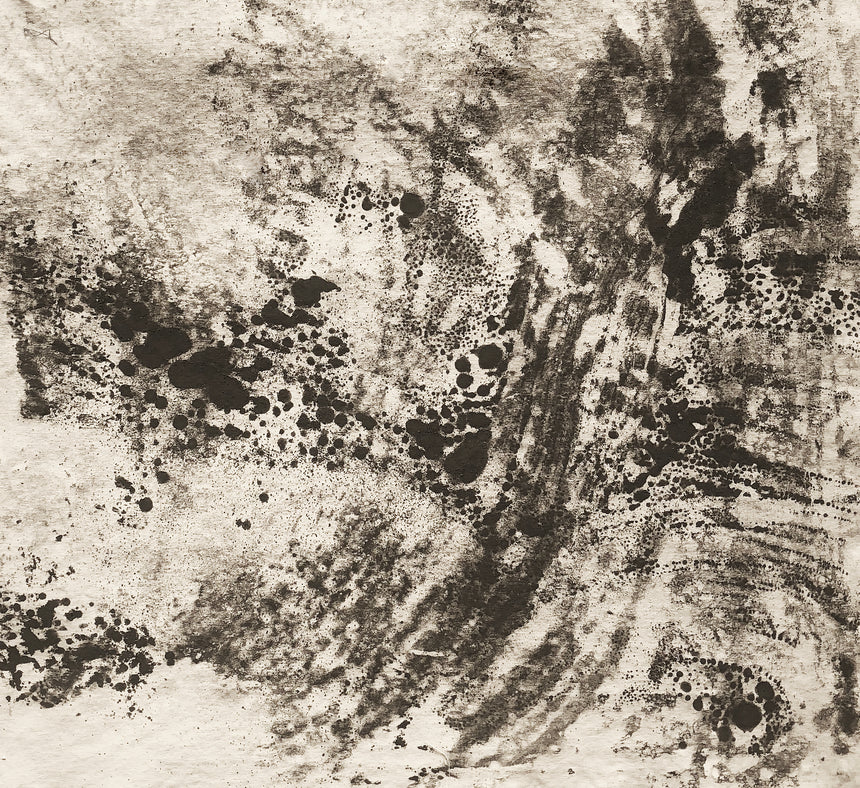Quemada Process
On Sunday, June 3rd, 2017 Volcan Fuego in Guatemala erupted on a catastrophic scale causing tragic death and loss to the neighboring villages surrounding the volcano. I was at a silent retreat in New York and my family was in Antigua, Guatemala during the event. Fortunately they were out of harm's way though the ash did carry far enough to blanket our community. After receiving news of the eruption I asked Rache to collect as much of the ash as she could so I could use it for a project I had started a year earlier.

Living just a few miles from an active volcano was a powerful experience. Every evening we sat on our roof top deck watching radiant orange lava flow in a steady stream down the side of Volcan Fuego. And the tremors we experienced on a regular basis let us know that Fuego was a force of nature that was to be respected. This had a profound effect on the direction of my art.
As I have mentioned, I began using volcanic ash as a medium about a year prior to the June 3rd eruption. A few miles from my home was an area that had experienced significant runoff from the volcano throughout the years. Volcanic ash and rock had accumulated in a river bed and I asked a friend to get me a bag of the loose ash so I could use it for some new paintings. The next day they arrived with a giant sack of volcanic stones and gravel and I proceeded to sift out the finer ash until I had a large pile that had a texture of fine sand and powder.
One of the more interesting outcomes of using the ash came before I even had a chance to apply it to the canvas. While sifting out the fine ash through a mesh screen, it began to accumulate in a pile on a large piece of cardboard I put down to receive it. I decided to fold the cardboard in a v shape so I could pour the ash into a bucket. After folding the cardboard with the ash I let the board fall back to its original flat shape and much to my surprise the pile of ash that was left on the board after folding was in the shape of a perfect vagina. This astonished me to say the least. I did it three more times and the result was three more ash vaginas! I knew I couldn’t save the works of art so I took photos and eventually dumped the ash into the bucket. I took this event as a sign that Pachamama was speaking to me through the ash and that this was a very fortuitous event that told me the project was going to be very special. I ascertained that the earth was crying and that I was to express this pain through the ash paintings I planned to make. This event also informed me that I was to create these paintings spontaneously with as little intervention of myself as possible. I understood that each piece should represent the earth speaking through me.


After I had accumulated enough ash I began to calmly spread it out onto a large piece of plywood. Though the events that brought this ash were violent and chaotic, the process know became mindful and serene. I focused on breathing through the process and not forcing the ash into some pattern I thought would work. I just let it flow onto the board. After the ash was spread onto the board I began tapping the board with a stick to see what would happen. The ash interestingly enough began to accumulate and congeal itself into perfect spheres rising above the board as if it were a landscape from another planet. Other washes of ash filled out the rest of the board.

I decided earlier that I was going to create a type of monoprint for the image. This involved brushing some methylcellulose mixture, a type of natural glue often used in bookmaking, onto a raw piece of upcycled canvas then laying the canvas over the ash image on the plywood board. I used methylcellulose because I wanted the materials to be as natural as possible to respect the process I was engaging in.
After carefully laying the canvas onto the board, I experimented with pressing the canvas down with varying degrees of pressure to get the image onto the canvas. Even though I had decided to carry this process out as spontaneously as possible, I didn't want to end up with a canvas just covered in black as with no visible image. When I felt the ash had transferred to the canvas sufficiently I lifted the canvas up and set it aside. After a few tries I had figured out how much pressure to apply to the canvas to get the best image. I soon fell into a flow and would repeat the whole process over and over. I found this to be an extremely meditative experience and was able to produce a large amount of canvases over a few hours.
After experimenting with a variety of techniques of applying and moving the ash around, I was able to come up with a variety of different types of images. Some have a subdued calm to them. Others have a violent explosive nature. This is a common theme in my work; the juxtaposition of calm and chaos that occurs in life itself.

I feel that I have only just started on this series and plan to return to Guatemala to continue the work. The work has not yet achieved the scale I am looking for and I plan on creating images as large as the canvas will accommodate, maybe sewing the canvas together to create even larger ash paintings.


